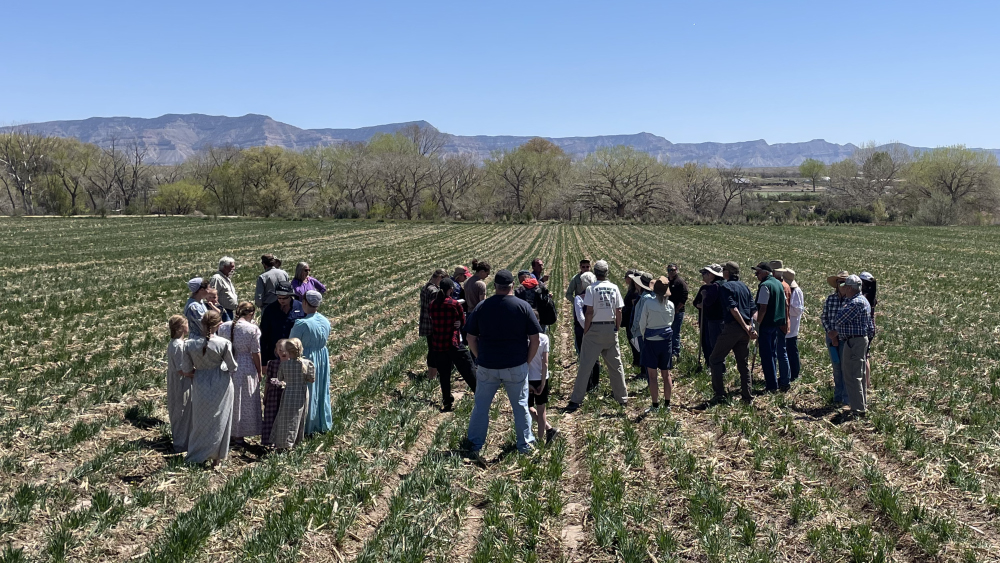- An Alliance For Community Action
- (970) 256-7650
- info@WesternColoradoAlliance.org
Seeing the signs of healthy soil for ourselves
Farmer Lowell King welcomed us to the Soil Health Tour at his family’s farm on April 30 with a shovel in his hand. We were a group of about 30 from Mesa, Eagle, and Montrose counties at the King farm to learn about soil health and regenerative farming. Farmer King was holding the shovel because, as he says, it’s better to show, not tell, how regenerative farming works.
To do that he gave us our own shovels, and invited us to dig up some of the healthy soil in his fields. He let us see for ourselves the abundant organic content, the strong root growth, and the well-fed worms that characterize good healthy soil on a regenerative farm. The soil was dark and moist and earthy smelling, roots were abundant, and worms were easy to find. Farmer King attributes that to his regenerative growing practices.
In brief, regenerative agriculture is about bringing soil into a state of natural good health and keeping it there season after season. Healthy soil has plenty of organic matter and is filled with life — from worms to fungus to bacteria and much, much more — all of it a part of an elaborate ecosystem that feeds and is fed by the plants, and keeps both thriving.
Regenerative agriculture works on five basic principles. Often first mentioned is KEEPING THE SOIL COVERED with plants like cover crops, which prevents erosion, keeps the soil at an even temperature, and preserves moisture. MINIMIZING SOIL DISTURBANCE is usually achieved by the practice of “no-till,” which preserves the soil structure (“tilth”) and provides homes for the soil’s living organisms. MAXIMIZING DIVERSITY by planting different types of crops, or rotating them, is the best way to provide the soil organisms and plants with the diverse nutrients they need. KEEPING LIVING ROOTS IN THE SOIL means never leaving the soil bare to dry out, blow away, or starve soil organisms of the sugars that roots supply. And finally INTEGRATING LIVESTOCK completes the natural cycle of soil and plant life by providing fertility and the essential stimulus of grazing.
Healthy soil grows healthy plants, which need fewer chemical “inputs” like fertilizer and pesticides. The plants in turn feed the soil microorganisms, maintaining the critical ecological balance between them. Healthy soil also retains water much better–important in our dry climate–and benefits us in myriad other ways including improving the nutritional content of the plants we eat, and often increasing a grower’s yields while decreasing input costs.
Thanks to farmers like Lowell King, the word is getting out about regenerative agriculture and its practices of incorporating cover crops and no-till planting techniques on large farms. Our attendees were impressed by what they saw and learned at the King family Farm Tour. And several were interested in finding out more about how the same concepts could be applied on smaller farms, and in their own backyard gardens.
Here at Western Colorado Alliance we plan to explore these ideas and questions at future events including more farm and garden tours. Please join us on this exciting journey!
Karen Rose is a Mesa County Master Gardener, a member of the Western Colorado Alliance Soil Health committee, and an avid hiker. She lives in Fruita.


